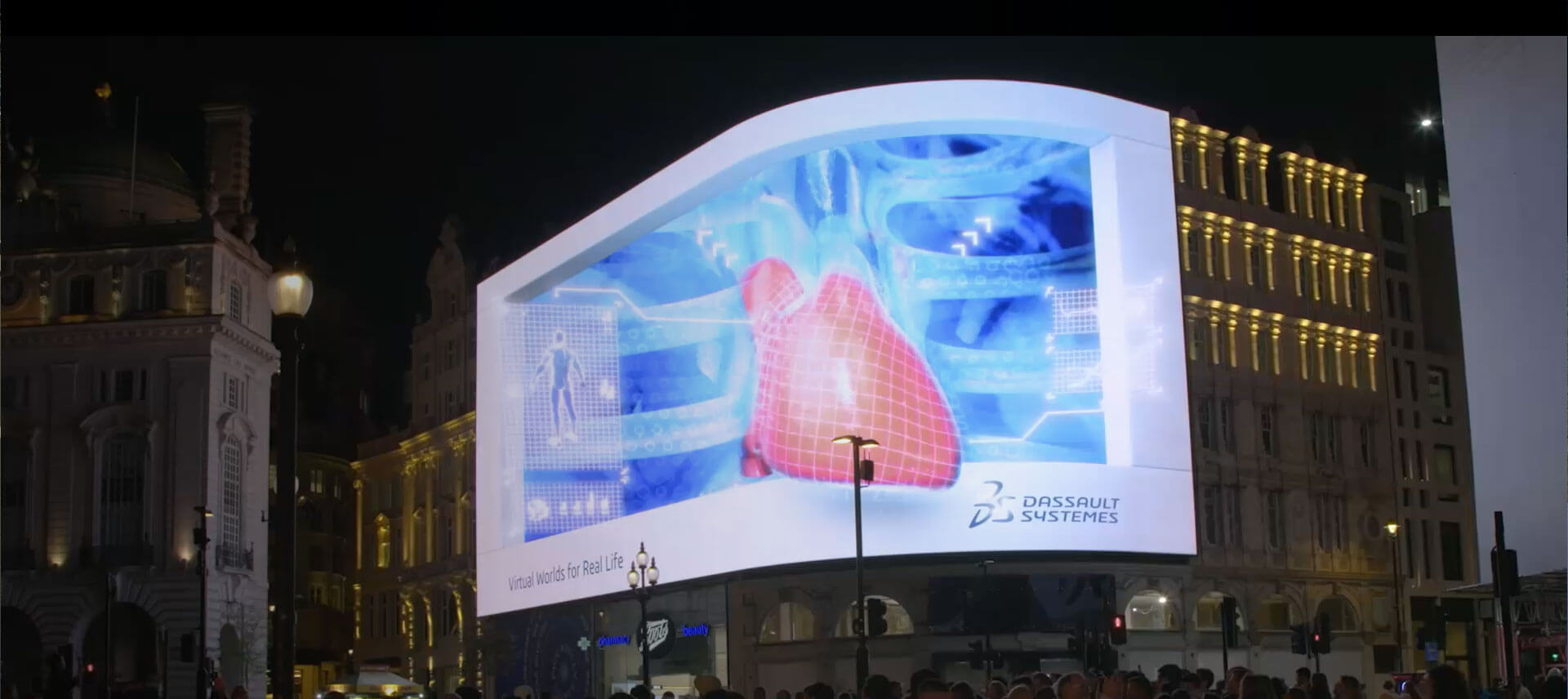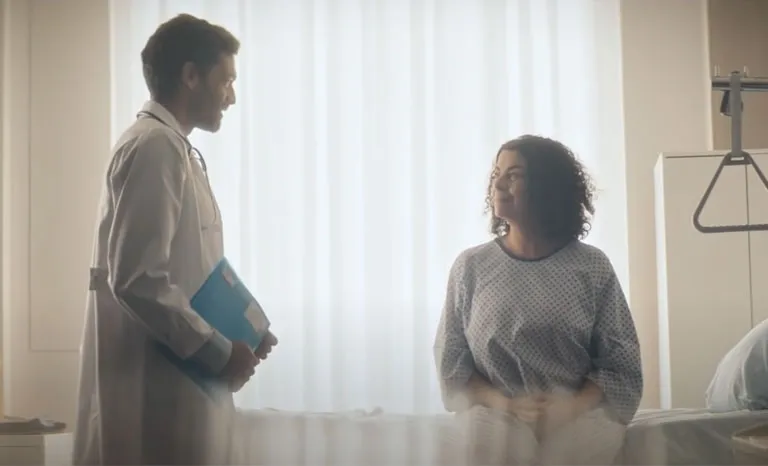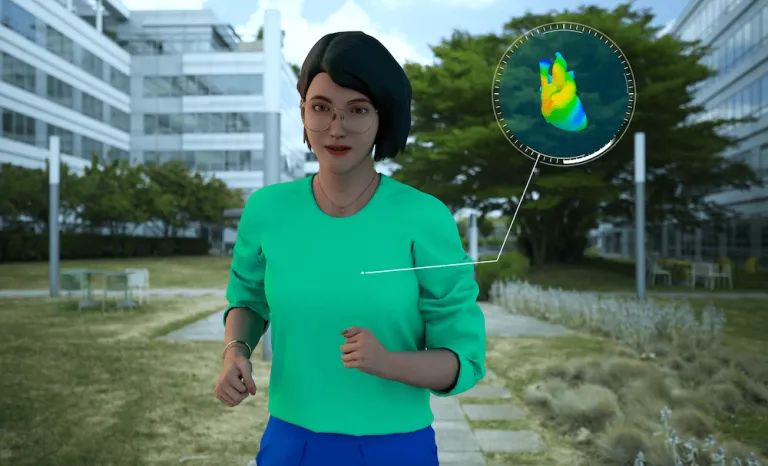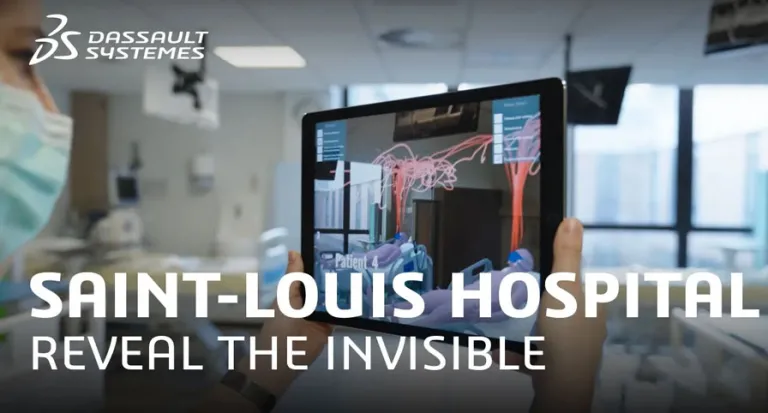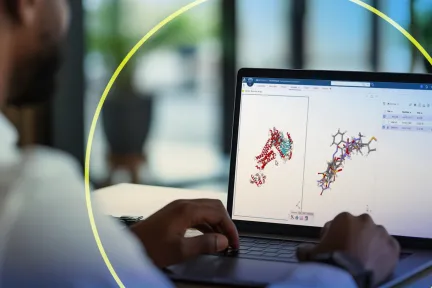Virtual Twin Experiences for Life Sciences & Healthcare
Discover how virtual twin technology transforms patient care, research and medical innovation.
What is a Virtual Twin in Healthcare?
Virtual twins are digital replicas that go beyond basic 3D modeling: they can predict future behaviors, enabling more precise and personalized patient care. This technology is transforming healthcare by addressing challenges and driving innovation, offering tailored treatments and improving overall outcomes.
Virtual twins in healthcare accelerate improvement of medical devices and therapies by enabling manufacturers to simulate and refine products before physical production. In hospitals, virtual twins create digital models of the healthcare facilities, ensuring a safer and more secure environment for patients, staff and visitors.
Virtualizing the development of new drugs or medical devices will bridge the gap between concept and reality.
How Do Virtual Twins Go Beyond Digital Twins in Healthcare?
A digital twin is a virtual replica of a physical object, while a virtual twin goes further by integrating real-world data for advanced simulations. In healthcare, it uses medical data to model a patient’s unique anatomy, supporting personalized care decisions.
As the healthcare industry rapidly evolves, virtual twins enable more patient-centric and outcome-driven experiences by simulating responses to treatments. They help healthcare providers refine strategies, optimize processes, and improve care through advanced modeling and real-time insights.
Meet Emma Twin, the Virtual Twin for Dassault Systèmes
Emma Twin has a unique job at Dassault Systèmes: to personally simulate medical conditions to visualize, test and predict treatments for a variety of conditions that could impact the human body.
Emma Twin is a virtual patient initiative which demonstrates new approaches for healthcare professionals to explore treatment options and predict outcomes with precision. By integrating real patient data, Emma Twin enhances decision-making and supports the development of personalized, preventive healthcare solutions, driving more effective and tailored care.
Revolutionizing Healthcare with Virtual Twin Technology
Explore how virtual twins are revolutionizing medicine by advancing precision healthcare, driving research and improving health outcomes.
How is Virtual Twin Technology Addressing Life Sciences & Healthcare Industry Challenges?
Virtual twin technology is transforming patient care, accelerating product development and optimizing clinical trials.
Creating a Patient-Centric Healthcare Model
Improving the focus on patient care by integrating data and artificial intelligence leads to better understanding the human body, from DNA to entire systems
Sustainably Developing Innovative Products
Using advanced modeling and biorealistic simulations to safely design and test new medicines, therapies and medical devices before physical production drives scientific progress
Virtualizing Clinical Trials
Accelerating the development of new medicines by transforming clinical trials with improved data management, evidence generation and decentralized processes, benefits patients and healthcare professionals
Meet your virtual twin! Discover the Living Heart and Living Brain projects
Powerful knowledge about the human body results when we can visualize, test, understand and predict what cannot be seen, from the way drugs affect a disease to surgical outcomes before a patient is treated.
Participate in a virtual reality experience that highlights the power of more deeply understanding the 3D anatomy of the brain and the heart.
How Virtual Twins are Used in Practice: Real-World Examples in the Life Sciences and Healthcare Industry
Virtual twin experiences unlock new possibilities in Life Sciences & Healthcare by helping us understand and represent what's invisible. This drives deep changes in business processes, strategic planning, regulations and technology, leading to more patient-centric, outcome-focused care. It transforms how therapies are discovered, developed, produced and used.
Explore how initiatives like the Living Brain and Living Heart projects, are used by researchers, device makers and doctors to create accurate virtual models for simulating medical conditions and testing treatments.
A real-world example is the use of virtual twin technology at Saint-Louis Hospital in Paris, where airflow simulations optimize hospital environments for greater safety and efficiency.
Using simulation to prevent virus spread in hospitals
Saint-Louis Hospital in Paris used Virtual Twin as a Service (VTaaS) to trace airborne pathogens in its dialysis unit and implement measures to protect vulnerable patients from infections.
By simulating airflow and pathogen spread, the hospital optimized ventilation to improve air quality and reduce infection risks, ensuring a safer environment for patients and staff.
Virtual Twins Across the Life Sciences & Healthcare Value Chain
Ready to Dive Deeper and Discover Our Brands Specializing in Life Sciences & Healthcare?
Curious About Virtual Twins? Find Answers in Our FAQ.
You Might Want to Explore...
About our company
We’re in the business of innovation. Through our unique solutions, we bring virtual twin experiences to everyone – including you!
Virtual Twin as a Service
VTaaS provides the expertise, equipment, and maintenance for virtual twins, delivering the value you need without the complexity.
Online store
Kick-start your design journey in a cloud-based collaborative space to foster innovation from day one.
Contact sales
Have a Dassault Systèmes expert contact you to answer your questions and discuss any of your needs.
